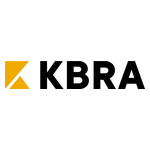You’ve checked the DEI box. Now what?
Seeing a recent picture of tech executives making volunteer AI safety and transparency pledges at the White House made me pause for a moment.

To truly transform is to have DEI values infused in the DNA of your company
Not just because they are making ‘voluntary commitments’, which we all know are nothing but words and will evaporate into thin air as soon as they collide with the ability to drive profits. But more so because that picture demonstrates the exact challenge that we have in society today: a team of all-male leaders at the decision-making table.
For a technology development as profound and crucial to our world as artificial intelligence that has the potential to impact all humankind and all industries, I can’t help but wonder, where are the women?
When the music stops
It wasn’t that long ago that companies from Wall Street to Main Street were pledging to do more to improve diversity in the workplace through a dizzying array of diversity, equity, and inclusion (DEI) programmes.
Over time, we saw more diverse faces on company brochures and videos, along with events to elevate their messaging during Women’s History Month, AAPI Month, Pride Month, Black History Month, Jewish American Heritage Month, Hispanic Heritage Month, Native American Heritage Month, Disability Awareness Month, and so on.
But as we find out time and time again, change takes time. And sometimes we may end up taking a few more steps backwards before moving forward. As economic challenges continue, commitments waver and diversity-focused roles along with new hires from underrepresented backgrounds begin to disappear.
Recently, the US Supreme Court voted six to three to reject affirmative action programmes at Harvard and the University of North Carolina, overturning cases going as far back as 45 years.
But the implications go way beyond education. While the ruling is on universities that receive federal funding only, corporations across the US are already assessing the ramifications on their hiring practices and policies, especially those that aim to improve diversity and pay equity as a way to counter systemic and historical bias.
Shortly after the ruling, 13 state attorney generals from Republican states issued a warning to Fortune 100 companies advising that they might be engaging in illegal racial discrimination due to DEI hiring practices.
Lipstick on a pig
It is equally troubling to see recent headlines describing the “rise and fall” of the chief diversity officer (CDO). Are they failing? Or were they never set up to succeed to begin with?
This begs the question: are CDOs effective means of bringing inclusive practices and cultures to organisations? Or are they just lipstick on a pig? When the responsibility of such drastic cultural change rests upon the shoulders of one person in the entire company (and someone without P&L responsibilities), should we even be surprised with the outcomes?
News flash: DEI officials are not magicians.
Are there better ways of nurturing and bringing diverse talents up through the ranks?
Déjà vu
While there are now more female chief executives in the US and the UK compared to five years ago, the representation is still minimal. Women only account for 8% of CEOs in both the S&P 500 and FTSE 350. Most women in senior roles tend to be in non-P&L positions in human resources, public relations, and marketing, rather than those that would typically lead to CEO positions.
Not to mention the gendered age biases that are still alive and well. While work and life experience are often considered an asset for men — hence the ‘prime working age’ — the same cannot be said for women. In fact, according to a recent study, such a mythical age does not exist for professional women. You are either considered too young or too old. And never good enough.
Sadly, the story sounds familiar, doesn’t it?
Awareness. Intention. Action.
I do wish I have a better story to tell — or that I have one of those five-step action plans that claim to guarantee success.
But I don’t.
What I do know is this: change is a long journey. Being aware of the need to change is merely the first step and the easiest one. Intention to change is the next step and it takes courage and time.
But the hardest part of all is to act: to influence and truly transform and inspire those around you. And in the workplace, this can only be successful if there is ample support and intention across the whole company to make it work. It takes investment in resources, change in mindset, and unwavering support from all levels.
To truly transform is to have the values infused in the DNA of the company.
True inclusion takes intention and action. It’s not something you happen to do because it is the right flavour of the month. And it is more important now than ever to speak up and double down before we lose the progress and the little gain that we have made.
Do your teams truly reflect the demographics of the world that we live in, and the customers that you serve? Or to put it more cynically, are you checking the right box?
 About the author
About the author
Theodora (Theo) Lau is the founder of Unconventional Ventures. She is the co-author of Beyond Good and co-host of One Vision, a podcast on fintech and innovation.
She is also a regular contributor for top industry events and publications, including Harvard Business Review and Nikkei Asian Review.











































